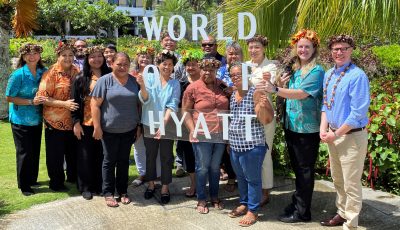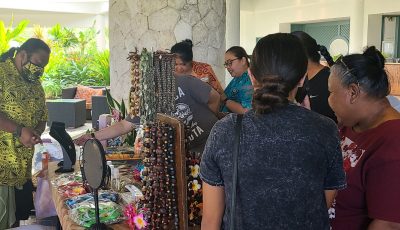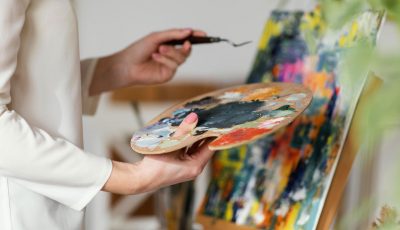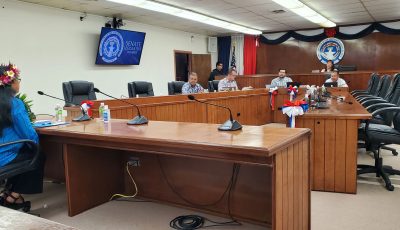Traditional canoe house to stand in Susupe
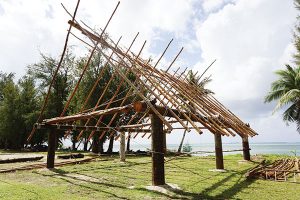
“This house has dual purposes: a canoe and eventually a classroom where traditional crafts and artistry will be taught and will be open to the community,” said John Castro, program coordinator for the Seafaring Tradition Program of the Department of Community and Cultural Affairs. (Bea Cabrera)
The Department of Community and Cultural Affairs is building a traditional canoe house fronting the ocean in Susupe as part of its Seafaring Traditions Program.
According to John Castro, program coordinator of the Seafaring Traditions Program, the structure being built in Susupe does not stop at a traditional canoe house.
Ultimately, it’s going to turn into a classroom that will teach traditional knowledge like basket weaving and other Chamorro artistry that deals with the cultural lifestyle of the island, he said.
In building the canoe house, Castro said that they are making all efforts to be as traditional as possible. That includes building it without the use of modern items like nails, materials that are similar to what the Chamorro ancestors used such as re-used lumber, and ropes that are made from coconut fiber.
“If we lack such materials, we do use modern materials to complete our purpose,” he added.
Construction of the canoe house is projected to be finished in June, if weather and materials needed permits.
“Finding the materials is a challenge, especially the coconut leaves. Majority of coconut leaves are inside private properties. It takes time as we have to weave them and there is a curing stage,” Castro said.
“However, we are working really hard to carefully [build] the house. …Our trades helpers—Oliver Iguel, Jordan Ogu, Mike Naputi, Jeric dela Cruz, and John Sablan—are committed to finishing the house the traditional way,” he added.
Castro said the inspiration for the program is for people to see how to live the culture on the islands in an authentic way.
“We will be building traditional canoes. We are blessed to have Tony Piailug, who is a master navigator in traditional seafaring to be an instructor in future seafaring classes that will be held in the house,” he said.
“We hope to get as close as possible to what is recorded historically, as the Chamorro ocean voyaging canoe was considered the biggest and largest canoe that the ancient Chamorros had. It may not be the exact replica but, since we have Tony Piailug as our master canoe builder as teacher and mentor in celestial navigation, it is possible,” he added.
At the end of the day, Castro hopes that the traditional canoe house will stand as an inspiration to the community.
“We want to inspire the next generation to be proud of their culture. We hope that this would be the beginning of something that will continue for generations to come,” he said.
“We also hope that this will inspire other villages to come together and build their own huts in their own village and, if they need assistance in terms of how it’s done, we can assist through the office of DCCA,” he added.



